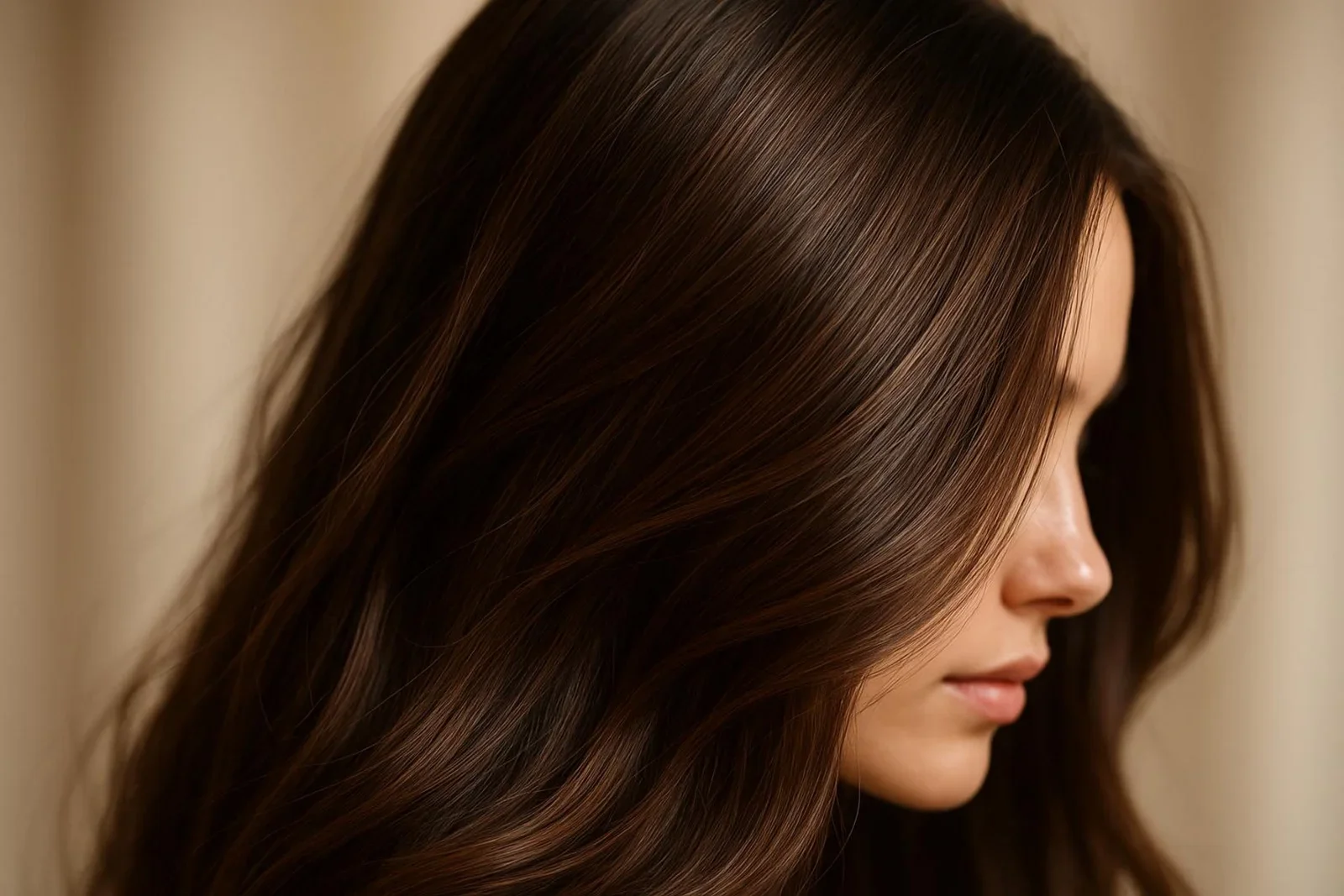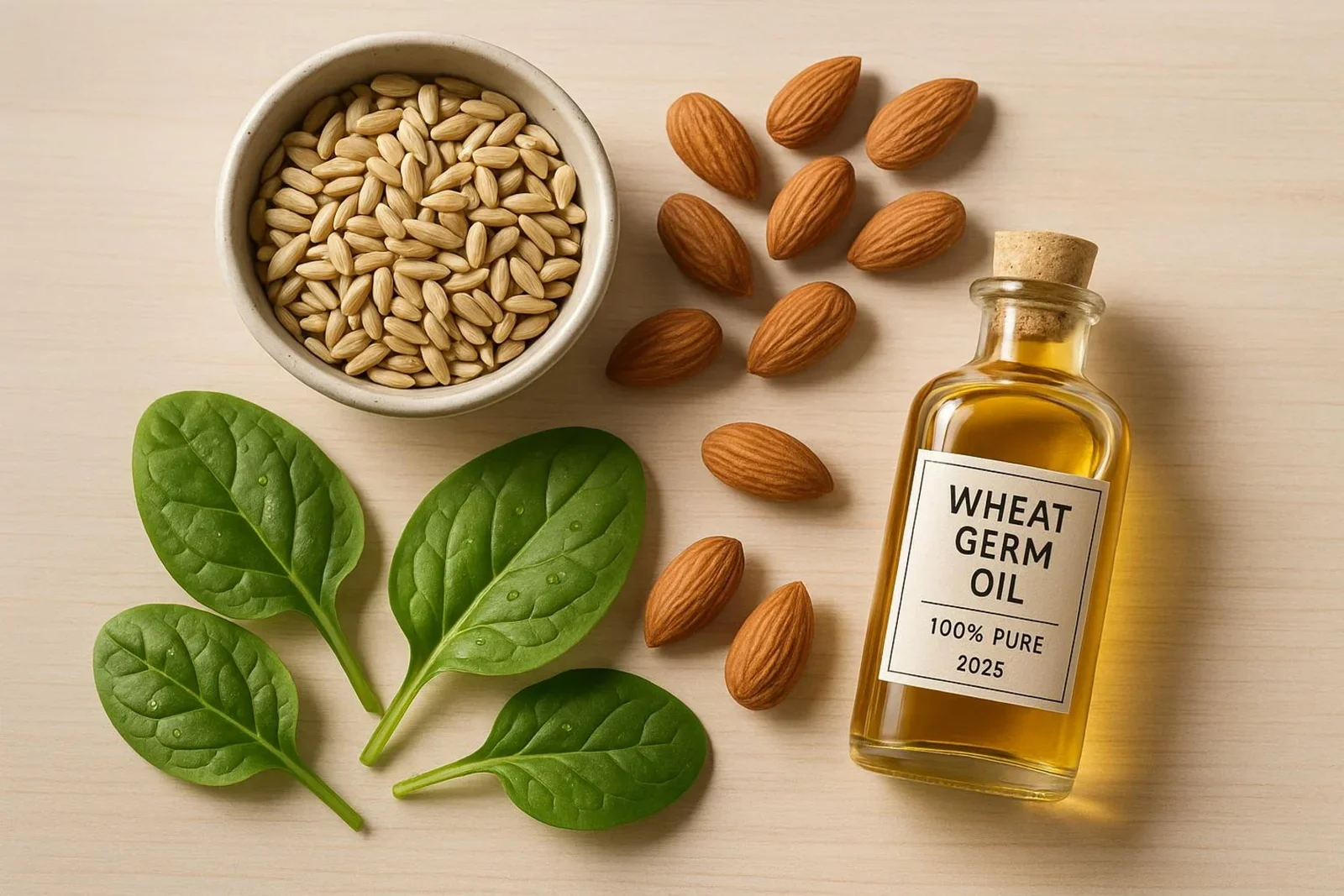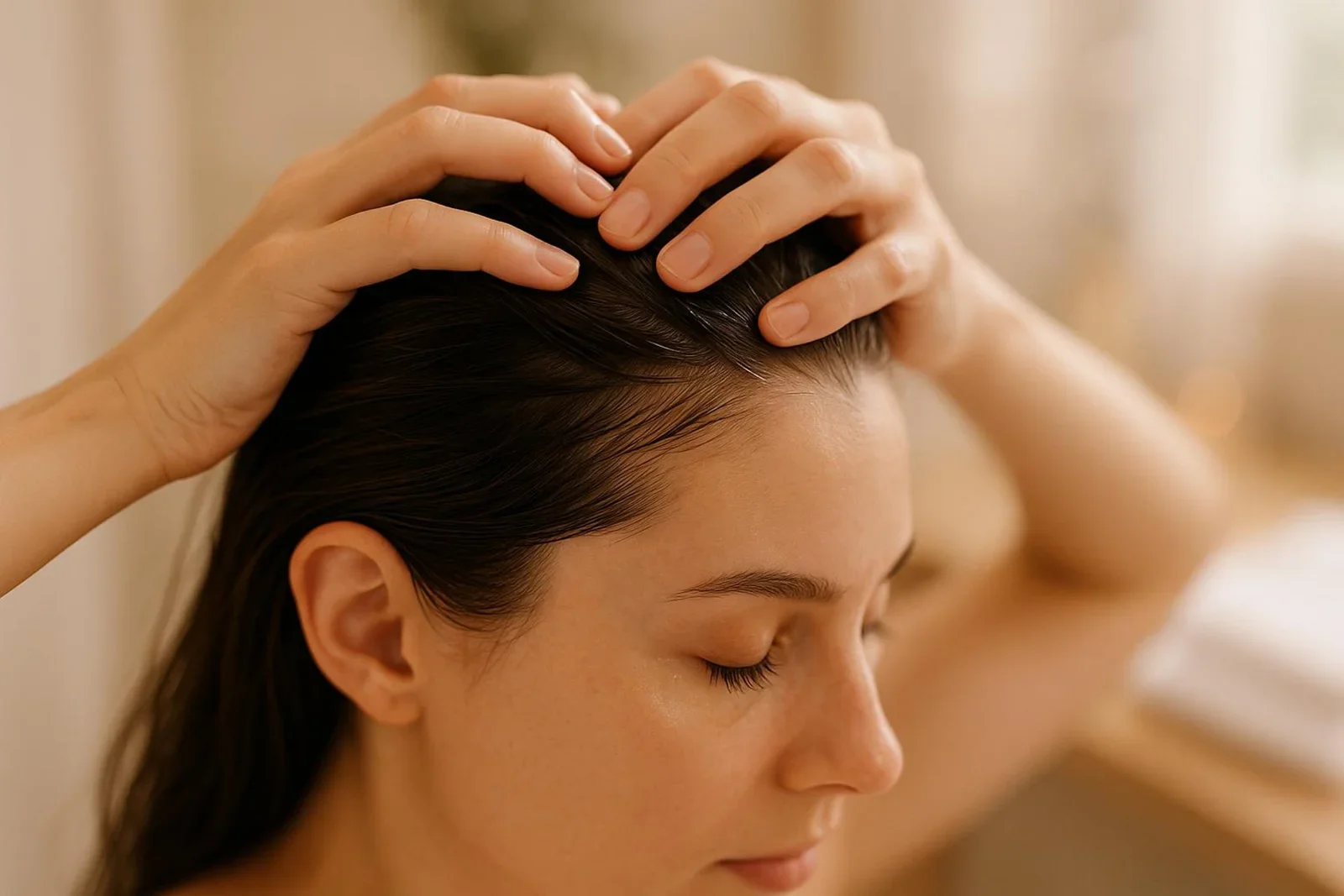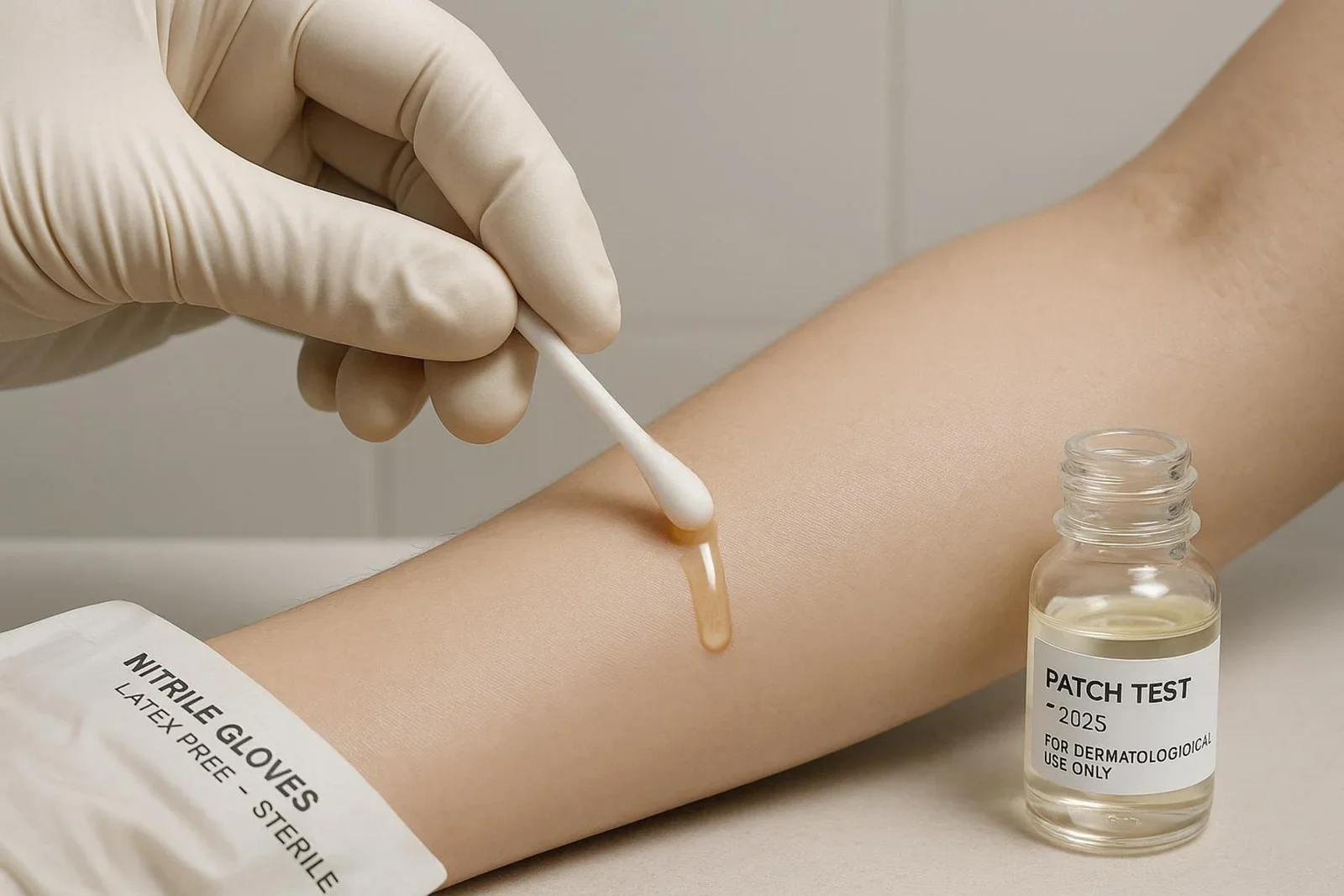Shine On: The Surprising Benefits of Vitamin E for Your Hair
Wondering if that little bottle of Vitamin E does more than help your skin? You’re on the right track. Vitamin E is a strong helper for hair health. It can turn dry, brittle strands into smoother, shinier hair. It may support growth, reduce breakage, and keep your scalp calm and hydrated. This fat-soluble antioxidant is a quiet star in haircare. Here are the simple ways Vitamin E can help your hair shine.
What is Vitamin E and How Does It Affect Hair?
Vitamin E is not a single nutrient. It’s a group of eight fat-soluble compounds with antioxidant power. These fall into two families: tocopherols and tocotrienols. They help keep skin healthy and support your immune system. Vitamin E has been popular in skincare for decades for helping with signs of ageing, irritation, and sun damage. But it also helps your scalp and hair, and many people are only now noticing how useful it can be.
The key is its antioxidant role. Our bodies and hair face stress from pollution, UV rays, and normal metabolism. These create “free radicals,” which can harm cells, including hair follicles and scalp tissue. Vitamin E helps protect these cells from damage, keeping your scalp and hair in better shape.
Role of Vitamin E in Hair and Scalp Health
Think of your scalp as the soil for your hair. If the scalp is healthy, hair has a better chance to grow well. Vitamin E plays an important part in keeping the scalp calm by reducing oxidative stress, which is often linked to poor hair quality and hair loss. It also helps maintain the scalp’s natural lipid barrier and supports cell turnover. This can mean less dryness, less irritation, and a better base for hair growth.
Vitamin E also helps the hair shaft. While hair strands don’t heal like skin, oils rich in Vitamin E can help rebuild the protective layer on the cuticle. That layer holds in moisture, limits breakage, and adds shine. Getting enough Vitamin E through food or using it on your hair can improve scalp comfort and the overall look and feel of your strands.
Key Benefits of Vitamin E for Your Hair
Vitamin E offers more than one benefit for hair. It can support growth, reduce damage, and add shine.
Promotes Hair Growth
Early studies suggest Vitamin E may help with hair growth, especially for people with hair thinning. Its antioxidant action may lower oxidative stress in the scalp, which is linked to hair loss. Less stress can help follicles work better. Vitamin E may also help blood flow to the scalp, which brings oxygen and nutrients the follicles need. More research is needed, but current findings look hopeful.
Reduces Hair Loss and Breakage
Vitamin E may help reduce hair fall by limiting environmental damage. It can also make the hair shaft stronger and less likely to snap. Ageing, chemical treatments, and heat tools can weaken follicles and strands, leading to split ends and breakage. Vitamin E oil can support stressed follicles and hair, helping them stay stronger and break less under daily wear.
Increases Shine and Smoothness
Damaged hair looks dull and frizzy when the cuticle’s fat layer is stripped. Oils rich in Vitamin E can help restore this layer. That brings back shine, improves elasticity, and smooths frizz. By locking in moisture and coating the strand, Vitamin E can make hair look lively and healthy.
Hydrates Dry Hair and Scalp
Dry, irritated scalp can be a sign of low Vitamin E. Used on the skin, Vitamin E works as a conditioner that hydrates and soothes dryness. It helps form a barrier on the surface, which holds moisture. Oils that naturally contain Vitamin E, like avocado oil, can moisturise the scalp and may help balance excess oil over time.
Strengthens Hair and Repairs Damage
Hair faces stress from dye, bleach, heat, pollution, and sun. Vitamin E is a popular pick for damage care. It supports follicles and hair shafts so they can handle more stress. For split ends, supporting damaged areas with Vitamin E can help reduce fraying and improve the feel of the hair. Over time, this can leave strands stronger and less likely to break.
How to Use Vitamin E for Healthier Hair
You can add Vitamin E to your routine through food or by applying it directly to your hair and scalp.
Including Vitamin E-Rich Foods in Your Diet
The easiest way to make sure you get enough Vitamin E is to eat a balanced diet. Most people meet their needs through daily meals. Good sources include nuts (almonds, hazelnuts), seeds (sunflower seeds), leafy greens (spinach, broccoli), and vegetable oils (sunflower oil, wheat germ oil). Many breakfast cereals are also fortified.
Whole foods often work well for your body. Try adding these to your meals:
| Food | Serving | Vitamin E (mg) |
|---|---|---|
| Wheat germ oil | 1 tbsp | 20.3 |
| Sunflower seeds (dry-roasted) | 28 g (about 1 oz) | 7.4 |
| Almonds | 28 g (about 1 oz) | 6.8 |
| Spinach (boiled) | 1/2 cup | Varies, small amount |
| Broccoli (boiled) | 1/2 cup | Varies, small amount |
Making these foods part of your regular diet is a simple and tasty way to support hair health from the inside.
Applying Vitamin E Oil to Hair and Scalp
If you want direct care, use Vitamin E topically. Pure Vitamin E oil is thick and can irritate skin, so dilute it with a carrier oil. Many ready-made Vitamin E oils already include coconut, jojoba, or lavender oil. You can also use oils that naturally contain Vitamin E, such as OGX Healing + Vitamin E Penetrating Oil or Maple Holistics Avocado Oil.
Massage the diluted oil into your scalp and comb it through with a wide-tooth comb. Leave it on for at least 15 minutes. Some dermatologists suggest leaving it overnight and rinsing well in the morning. Then wash with your usual shampoo. If your hair already feels soft, you may skip conditioner. This approach targets dryness, helps with oxidative stress, and gives your hair an antioxidant boost.
Choosing Shampoo and Conditioner with Vitamin E
If you prefer a simple option, try shampoos and conditioners that include Vitamin E. Many are made for dry or damaged hair and for frequent use. Check the label for Vitamin E. Let the product sit on your scalp and hair for a few minutes in the shower so it can absorb better.
Ranges like Kérastase Chronologiste spotlight Vitamin E with other helpful ingredients such as hyaluronic acid and abyssine to hydrate, plump, and protect hair fibres. These products make it easy to add Vitamin E to your wash routine. For extra care, use a Vitamin E hair mask once a week or in place of conditioner, focusing on the scalp and mid-lengths.
Practical Tips for Introducing Vitamin E to Your Hair Routine
Ready to try Vitamin E for your hair? Use these simple tips to do it safely and well.
Step-by-Step Guide to Applying Vitamin E Oil
If you want to use Vitamin E oil on your hair and scalp, follow these steps:
Choose Your Oil: Pick a Vitamin E oil already mixed with a carrier oil (coconut, jojoba, or avocado). If using pure Vitamin E, dilute a few drops into 1 tablespoon of carrier oil.
Prepare Your Hair: Make sure your hair is dry before you start. Dry hair absorbs oil more evenly.
Apply Sparingly: Start with a small, coin-sized amount. Add more only if needed to avoid a greasy look.
Massage into Scalp: Use your fingertips to massage your scalp. This helps absorption and may support blood flow.
Distribute Through Strands: Smooth the leftover oil through mid-lengths and ends. Use a wide-tooth comb for even coverage.
Let it Sit: Leave on for at least 15 minutes. For a deeper treatment, leave it for an hour or overnight if your hair is very dry. Cover your hair to protect your pillow.
Rinse and Wash: Shampoo well until the oil is out. You may need two washes if you used a lot. Skip conditioner if your hair already feels soft.
Style as Usual: Dry and style your hair as you normally do.
Best Practices for Patch Testing
Patch test before using any new product on your scalp. Apply a tiny amount of diluted Vitamin E oil to skin behind your ear or on your inner forearm. Wait 24 hours. If you see redness, itching, swelling, or a rash, don’t use it on your hair or scalp.
How Often Should You Use Vitamin E on Hair?
With Vitamin E oil, start slow. Try it a few times a week and watch how your hair and scalp react. Everyone’s hair is different, so adjust the amount and frequency to suit your needs. If your hair is oily, focus on mid-lengths and ends instead of the scalp. Shampoos and conditioners with Vitamin E can be used as often as you usually wash your hair.
Vitamin E is helpful, but it’s not a magic cure. Be consistent and learn what your hair likes. If you have scalp or hair conditions, talk with a healthcare provider before trying new treatments.
Risks, Side Effects and Precautions of Using Vitamin E
Vitamin E is generally safe, especially from food, but use some care with supplements and topical oils.
Possible Side Effects of Topical Vitamin E
The main risk with topical use is skin irritation. Pure Vitamin E oil can cause redness, itching, or a rash, so always dilute it with a carrier oil. Even diluted, do a patch test first. If your scalp is very sensitive, Vitamin E may still bother it because the oil can feel heavy. If irritation happens, stop using it.
Risks of Excess Oral Supplementation
Food sources are safe for most people, but large-dose supplements can cause problems. Adults need about 15 mg (22.4 IU) of Vitamin E per day, which is usually easy to meet with food. Many supplements contain much higher doses. High intakes may affect thyroid hormones, weaken bones, and raise the risk of prostate cancer. Vitamin E can also interact with medicines like blood thinners, other antioxidants (such as Vitamin C), and some cancer treatments. Talk to your doctor before starting a Vitamin E supplement, especially if you take medications or have health conditions.
The National Institutes of Health advises staying under 1,500 IU of natural Vitamin E or 1,100 IU of synthetic Vitamin E per day. Getting your Vitamin E from whole foods is a safer approach for most people.
Who Should Avoid Vitamin E for Hair?
People with very sensitive scalps may find topical Vitamin E irritating, even when diluted. If a patch test causes redness or itching that doesn’t settle, skip direct application.
Anyone on blood thinners or going through treatments like chemotherapy or radiotherapy should speak with a doctor before taking Vitamin E supplements. If you have skin, scalp, or hair conditions, get medical advice before using Vitamin E, either on your scalp or by mouth.
Shine On: Final Thoughts on Vitamin E and Hair Health
Vitamin E can be a simple, steady helper for healthy hair. It supports scalp comfort, helps protect follicles, and adds softness and shine across the lengths. You don’t need a complicated routine to see benefits-just smart habits done often.
A balanced plan works well. Eat foods rich in Vitamin E for inside-out support, and use topical products to target dry or damaged areas. Try a homemade mask, pick a Vitamin E shampoo, or massage a diluted oil into your scalp. Be patient and consistent, watch how your hair responds, and tweak your routine as needed. With steady use, Vitamin E can help your hair look and feel healthier-naturally and beautifully.
Do you live in Sydney?
Get the perfect look at our salon – schedule your appointment now!
Our Services
Check Out Our Instagram
Check out our instagram
Check out our instagram and see our latest posts!
Check out our facebook
Check out our facebook and see our latest
posts!













